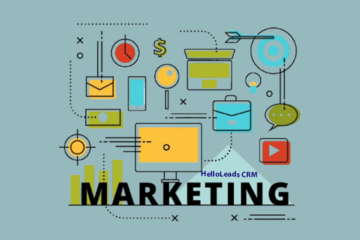
In today’s fast-paced business world, finding new customers and keeping them for life can be a daunting task.
But what if there is a way to attract potential customers, build relationships with them, and turn them into loyal customers who will stick with you for the long haul?
That’s where lead management comes in. By following a series of well-defined stages, you can effectively manage leads, identify the most promising ones, and convert them into paying customers. Whether you’re a small business owner or a marketing professional in a large corporation, lead management is a critical skill that can make all the difference in your success.
In this blog, we’ll guide you through the stages of lead management and show you how to take your lead generation efforts to the next level. So, let’s dive in and discover the secrets of effective lead management!
Stages of lead management
Lead management involves a series of actions aimed at attracting, engaging, and nurturing leads, and ultimately converting them into customers. The following are the key stages of lead management.
1 . Lead generation

Lead generation is the first stage of the lead management process. It involves identifying potential customers and capturing their contact information. This can be done through various sources such as online forms, events, referrals, advertising, etc. The goal of lead generation is to build a pool of qualified leads to work with.
2 . Lead qualification
Lead qualification is the stage where you assess the leads generated in the previous stage to determine their level of interest, budget, and decision-making authority. This stage is critical to ensure that you are focusing on leads who are most likely to become customers. Lead qualification helps you understand the needs, challenges, and buying behavior of the lead. This stage helps you prioritize and allocate your resources effectively.
3 . Lead nurturing

Lead nurturing is the stage where you build relationship with the lead through regular communication, education, and personalized content. The goal of lead nurturing is to educate the lead about your products or services and establish trust. This stage is crucial to keep the lead engaged and interested in your business and ultimately convert them into customers.
4 . Lead scoring
Lead scoring is the stage where you assign a score to a lead based on their engagement, behavior, and demographic data. Lead scoring helps you prioritize leads and allocate resources effectively. A lead score helps you understand which leads are most likely to become customers. You can also use lead scoring to track the lead’s progress and determine the next best action.
5 . Lead conversion
Lead conversion is the stage where you turn leads into customers through successful sale or other desired actions. This stage is the ultimate goal of lead management. Lead conversion is the result of the efforts of the previous stages and the culmination of the lead management process.
6 . Lead follow-up
Lead follow-up is the stage where you continue to communicate with the customer to ensure that you understand their needs fully, and provide information so that the customer can take a proactive call on the purchase. This stage is important to maintain the customer relationship and increase customer retention. Lead follow-up can help you identify any customer issues and opportunities for up-selling or cross-selling. By regularly following up with customers, you can also collect feedback and use it to improve your lead management process.
Lead management is a complex process that involves several stages, each of which is critical to the success of the overall process.
It begins with identifying and capturing potential customer information, followed by lead qualification and nurturing through personalized content. The final stage of the process involves the conversion of leads into paying customers.
While the process may be time-consuming and resource-intensive, it is well worth the effort when executed correctly. By prioritizing lead management and following a well-designed strategy, businesses can identify and engage with qualified leads, nurture them through the sales funnel, and ultimately achieve their conversion goals. The result is a more effective sales process, increased revenue, and long-term customer loyalty.
Lead management CRMs, such as HelloLeads CRM, help you to define and keep track of lead stages. By using a CRM your job of managing leads and their stages becomes easy.
Share this blog :












